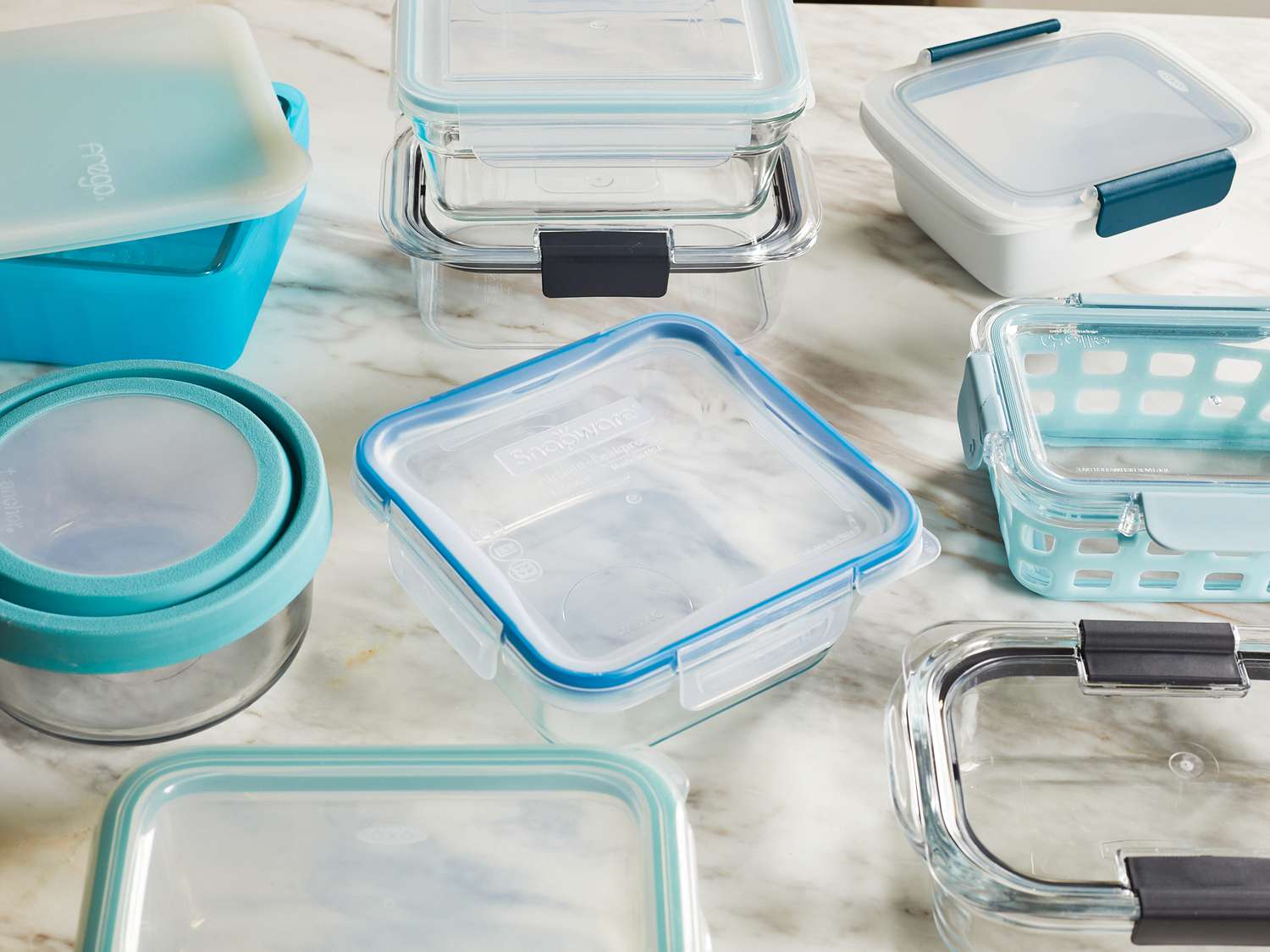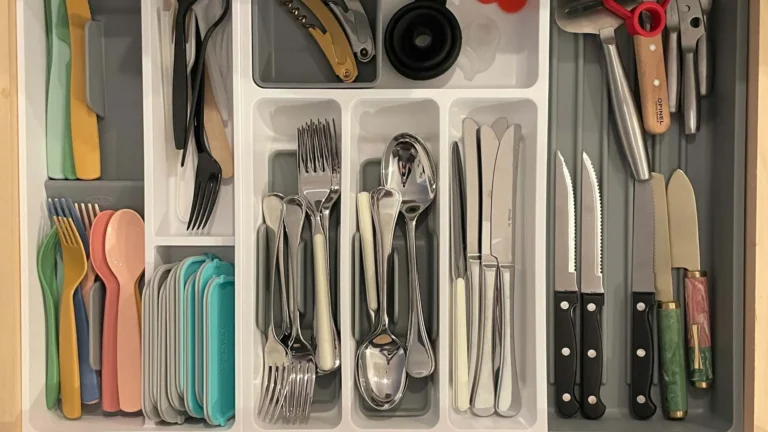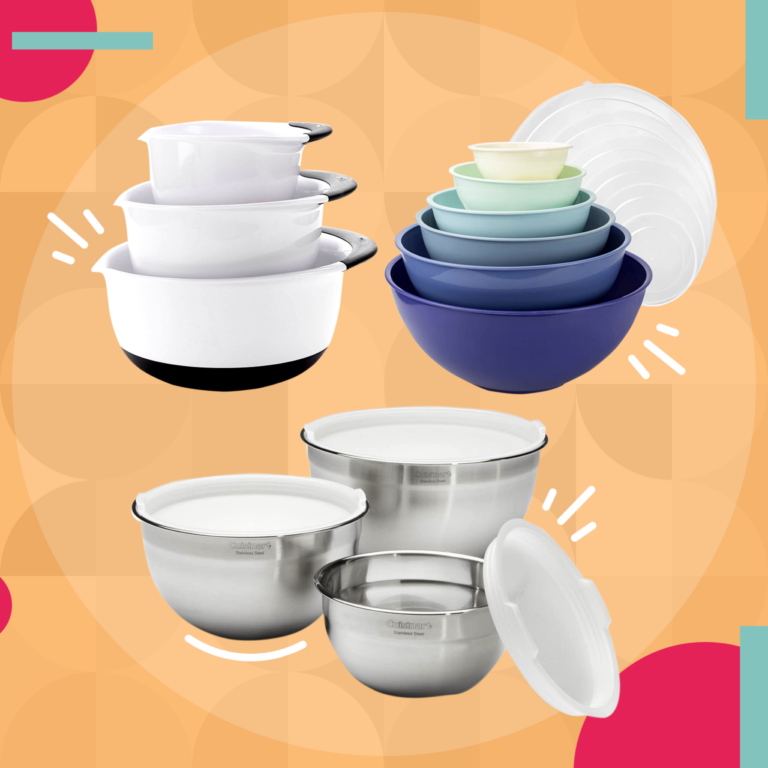Food storage containers are essential for meal prep, leftovers, and lunches on the go. In 2025, they’re smarter, safer, and more eco-friendly than ever. This guide to the best food storage containers of 2025 covers different materials, innovative features, top brands, and tips for choosing the right options to keep your food fresh and your kitchen organized. Make freshness easy and stylish!
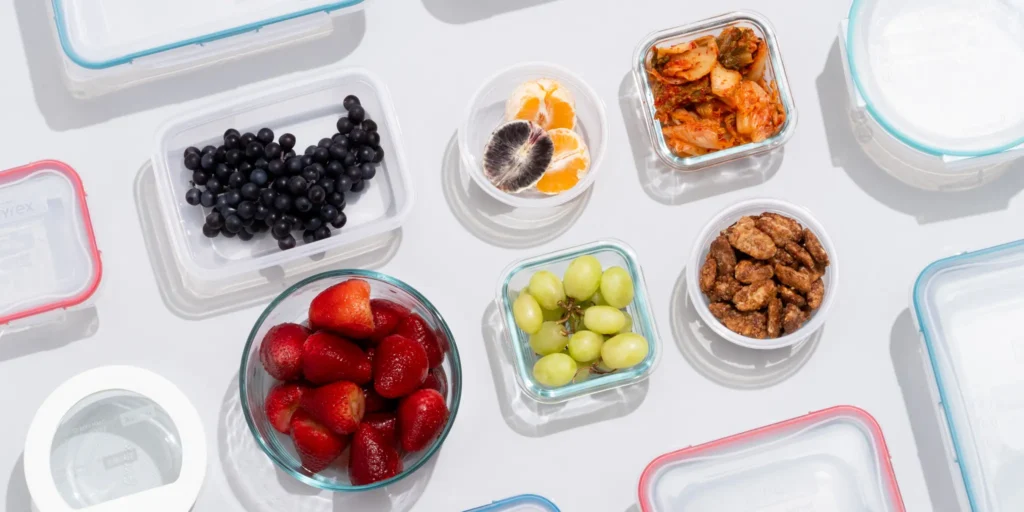
Table of Contents
Why Quality Food Storage Containers Matter
It’s tempting to toss leftovers into any old container, but investing in quality containers offers big benefits:
- Food Stays Fresher Longer: Airtight seals keep moisture and air out.
- Prevents Leaks: Perfect for carrying soups or sauces without spills.
- Saves Money: Reduces food waste by keeping ingredients usable.
- Organizes Your Kitchen: Uniform sizes stack neatly in your fridge or pantry.
- Sustainability: Reusable containers cut down on single-use plastics.
Quality containers are a small investment that pays off daily.
Types of Food Storage Containers
In 2025, the range of storage containers is bigger than ever. Here’s what you’ll find:
1. Plastic Containers
Lightweight and budget-friendly, plastic remains popular.
Pros:
- Lightweight and easy to carry
- Often microwave-safe (check labels)
- Affordable
- Variety of shapes and sizes
Cons:
- Can stain with tomato sauces
- Scratches over time
- Not all plastics are BPA-free
Best for: Packed lunches, light storage, kids’ snacks.
2. Glass Containers
Glass containers remain a favorite for health-conscious and eco-friendly users.
Pros:
- Non-porous and odor-resistant
- Oven- and microwave-safe
- See-through for easy identification
- Long-lasting durability
Cons:
- Heavier
- Can break if dropped
- Higher price point
Best for: Meal prep, leftovers, oven-to-table use.
3. Stainless Steel Containers
Sleek, durable, and increasingly popular in 2025.
Pros:
- Extremely durable
- Doesn’t retain odors or stains
- Lightweight yet sturdy
- Eco-friendly and recyclable
Cons:
- Not microwave-safe
- Can dent with hard impacts
- Opaque—can’t see contents
Best for: Outdoor meals, kids’ lunches, sustainability.
4. Silicone Containers
Flexible and collapsible, silicone is perfect for saving space.
Pros:
- Folds down for storage
- Microwave and freezer safe
- Lightweight
- Easy to clean
Cons:
- Can stain over time
- Not as rigid for stacking heavy items
Best for: Travel, small kitchens, flexible storage.
5. Vacuum-Seal Containers
Smart technology meets freshness with these modern containers.
Pros:
- Removes air for longer freshness
- Great for meal prep and bulk storage
- Reduces freezer burn
Cons:
- Requires a separate vacuum pump or machine
- More expensive
Best for: Serious meal preppers, bulk storage, preserving delicate foods.
Key Features to Look For in Food Storage Containers
When shopping for the best food storage containers, consider these features:
- Airtight Seals: Prevents leaks and keeps food fresh.
- BPA-Free Materials: Safer for you and the environment.
- Stackability: Saves precious fridge and cabinet space.
- Microwave/Oven Safety: For reheating meals.
- Dishwasher Safe: Makes cleaning easy.
- Portion Sizes: Different sizes for snacks, lunches, and bulk storage.
- Stain and Odor Resistance: Keeps containers looking and smelling fresh.
Best Food Storage Containers of 2025
Ready to organize your kitchen? Here are the top food storage containers of 2025, perfect for different needs and budgets.
1. Pyrex Simply Store Glass Containers
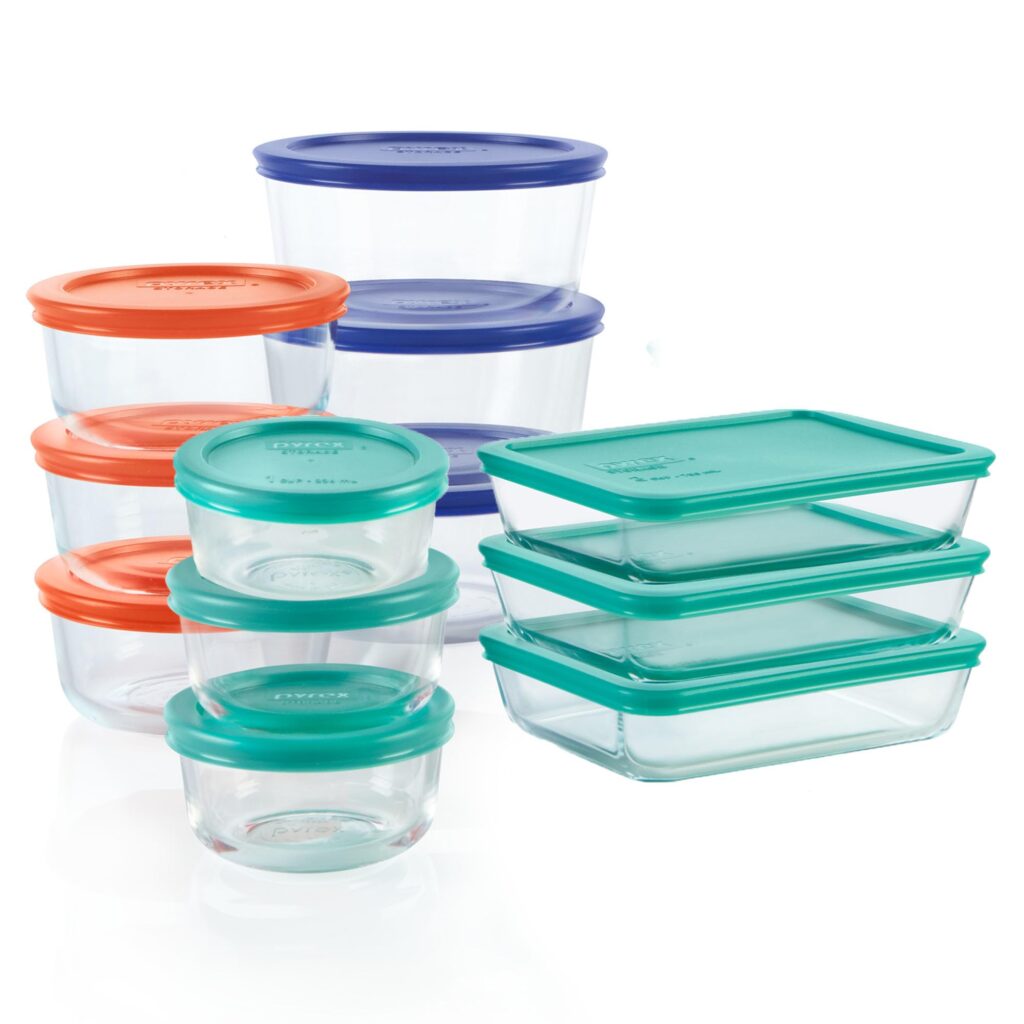

Material: Glass
Pyrex remains a top choice for glass food storage.
Pros:
- Oven, microwave, freezer, and dishwasher safe
- Leakproof lids
- Variety of sizes
- Durable tempered glass
Cons:
- Heavy
- Lids can warp over time
Best for everyday leftovers and meal prep.
2. Rubbermaid Brilliance Plastic Containers
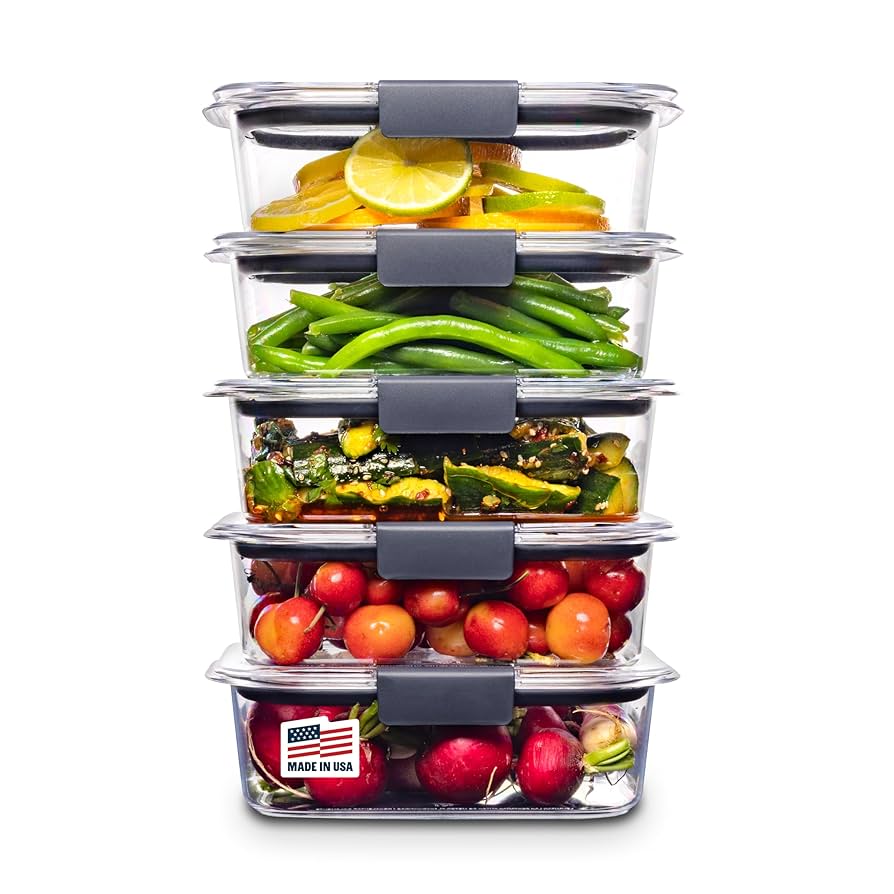

Material: Plastic
These containers look and perform beautifully.
Pros:
- 100% leakproof lids
- Crystal-clear plastic
- BPA-free
- Stain-resistant
Cons:
- Not oven safe
- Can scratch over time
Perfect for lunches, snacks, and storing liquids.
3. Stasher Silicone Reusable Bags
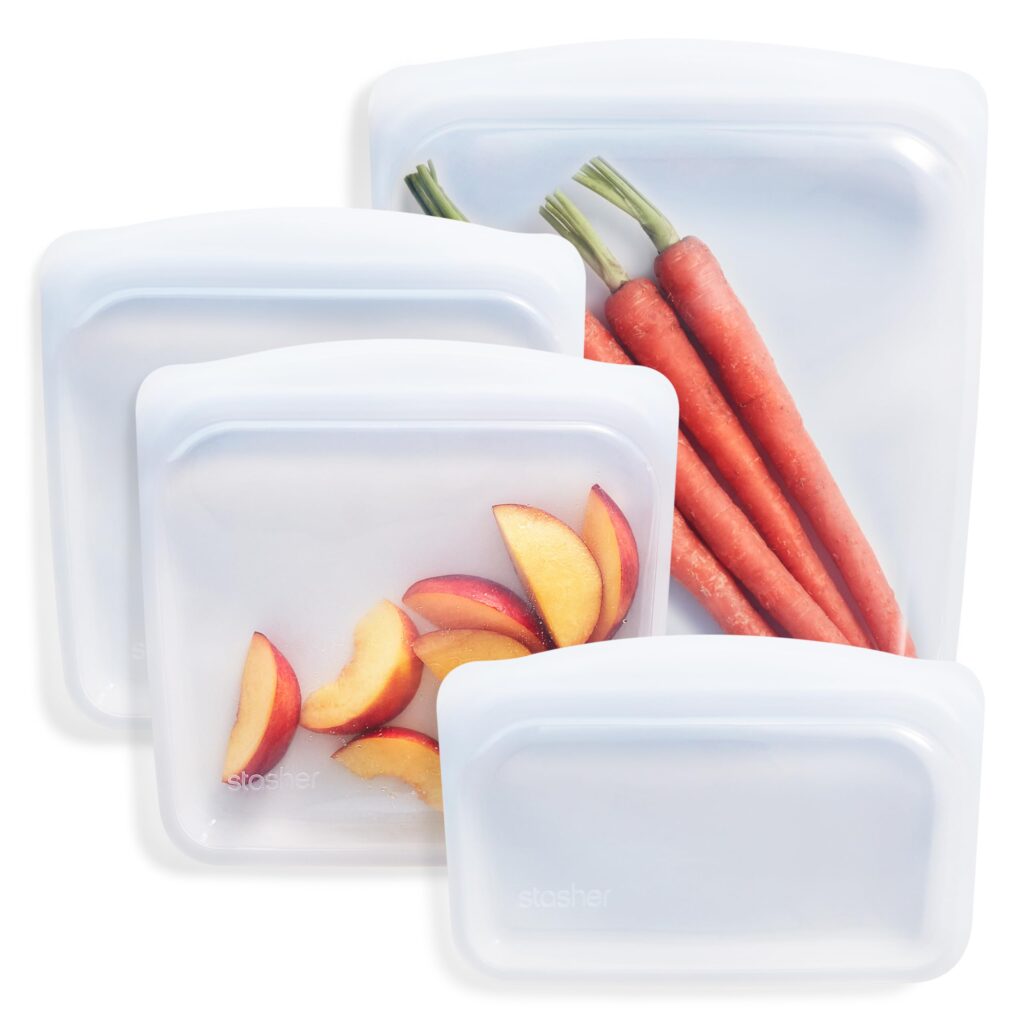

Material: Silicone
An eco-friendly favorite for 2025.
Pros:
- Completely reusable
- Microwave, oven, freezer safe
- Dishwasher safe
- Comes in fun colors
Cons:
- Higher upfront cost
- Not rigid for stacking
Ideal for snacks, freezer storage, and sustainable living.
4. Zwilling Fresh & Save Vacuum Containers
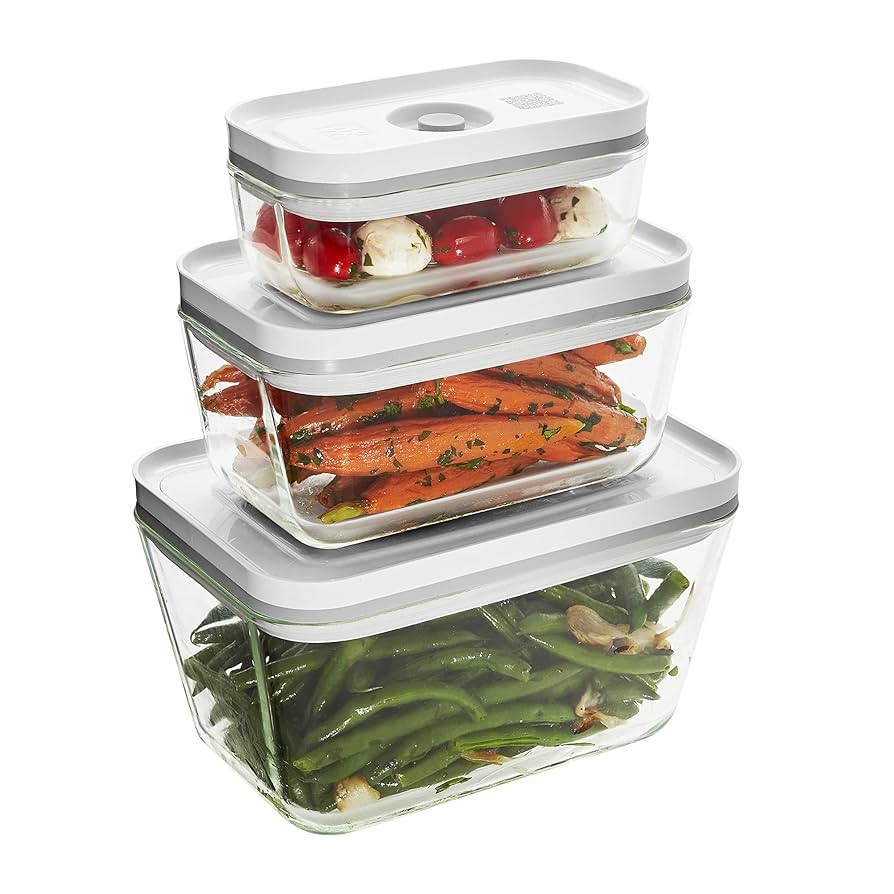

Material: Plastic and Glass options
A modern solution for keeping food fresh.
Pros:
- Vacuum seal keeps food fresh up to 5x longer
- Works with an app for tracking food freshness
- Stackable design
- Stylish aesthetics
Cons:
- Requires separate vacuum pump
- Premium price point
Perfect for meal preppers and reducing food waste.
5. ECOlunchbox Stainless Steel Containers
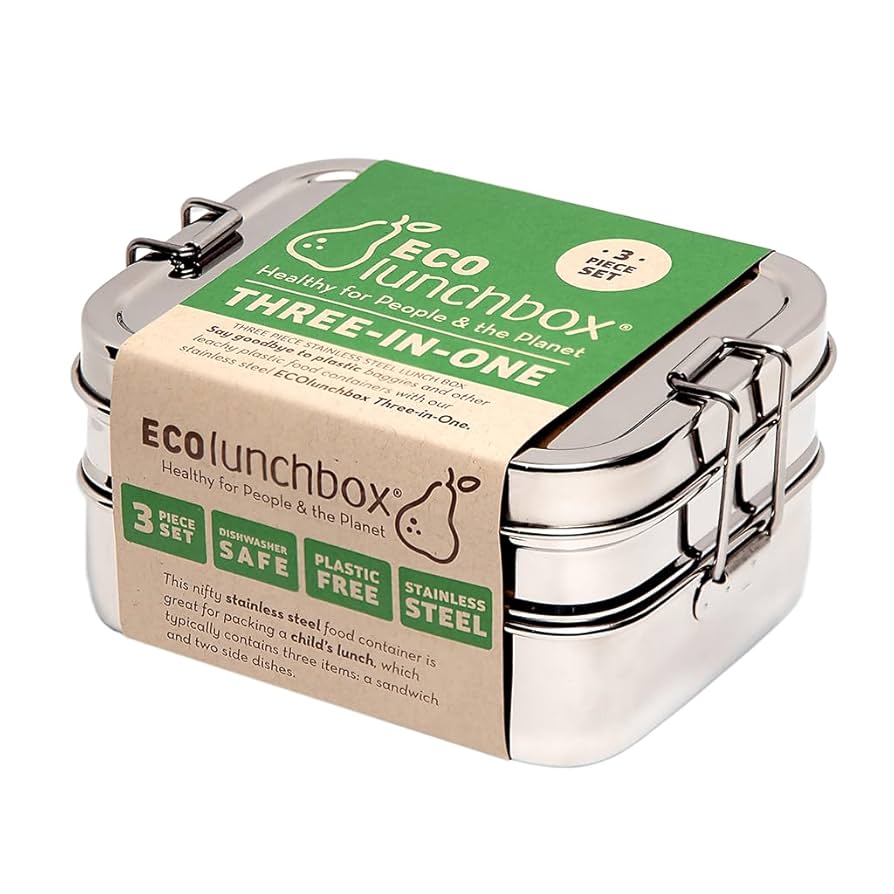

Material: Stainless Steel
Sustainable, plastic-free, and stylish.
Pros:
- Durable and long-lasting
- Plastic-free and BPA-free
- Lightweight
- Eco-friendly
Cons:
- Not microwave-safe
- Opaque
Great for eco-conscious lunches and travel meals.
Best Containers for Meal Prep
Meal prep lovers need containers that are:
- Stackable and space-saving
- Leakproof for sauces
- Microwave and freezer safe
Top picks:
- Pyrex Simply Store
- Rubbermaid Brilliance
- Zwilling Fresh & Save
Best Containers for On-the-Go Meals
For lunches and snacks:
- Look for lightweight, leakproof designs.
- Consider stainless steel or silicone for sustainability.
Top picks:
- Rubbermaid Brilliance
- ECOlunchbox Stainless Steel
- Stasher Silicone Bags
Best Containers for Freezer Storage
For freezing, choose:
- Durable materials that resist cracking
- Airtight seals to prevent freezer burn
Top choices:
- Pyrex Simply Store
- Stasher Silicone Bags
- Zwilling Fresh & Save Vacuum
Sustainable Storage Solutions
Sustainability is a major trend in 2025. Look for:
- BPA-free materials
- Recycled plastics
- Reusable silicone bags
- Long-lasting containers that reduce waste
Brands like Stasher and ECOlunchbox are leaders in sustainable storage.
How to Care for Your Food Storage Containers
Keep your containers in top shape with these tips:
- Avoid microwaving plastic lids unless marked microwave-safe.
- Wash silicone and plastic containers in the top rack of the dishwasher.
- Don’t subject glass to sudden temperature changes.
- Store containers with lids off to prevent odors.
- Replace containers if they show cracks, warping, or stains that won’t come out.
Popular Food Storage Brands in 2025
Trusted names delivering quality and innovation:
- Pyrex: Timeless glass storage solutions.
- Rubbermaid: Innovative plastic designs.
- Zwilling: Smart vacuum-seal systems.
- Stasher: Pioneers of reusable silicone bags.
- ECOlunchbox: Sustainable stainless steel options.
Choosing the Right Containers for You
Ask yourself:
- How do I use my containers? Meal prep, lunch packing, freezer storage?
- Do I want sustainable options? Silicone, stainless steel, or recycled materials.
- Do I prioritize lightweight or durability? Plastic is lighter; glass and steel are tougher.
- What’s my budget? Quality containers exist at every price point.
Investing in the right containers makes your kitchen more efficient and your food fresher.
Conclusion: Keep It Fresh in 2025
In 2025, food storage containers are smarter, safer, and more beautiful than ever. Whether you’re prepping healthy meals for the week, storing leftovers, or packing a lunch for work, the right containers make freshness easy—and sustainable.

